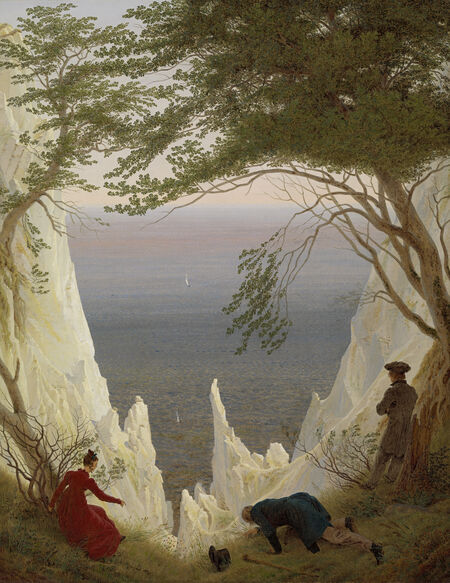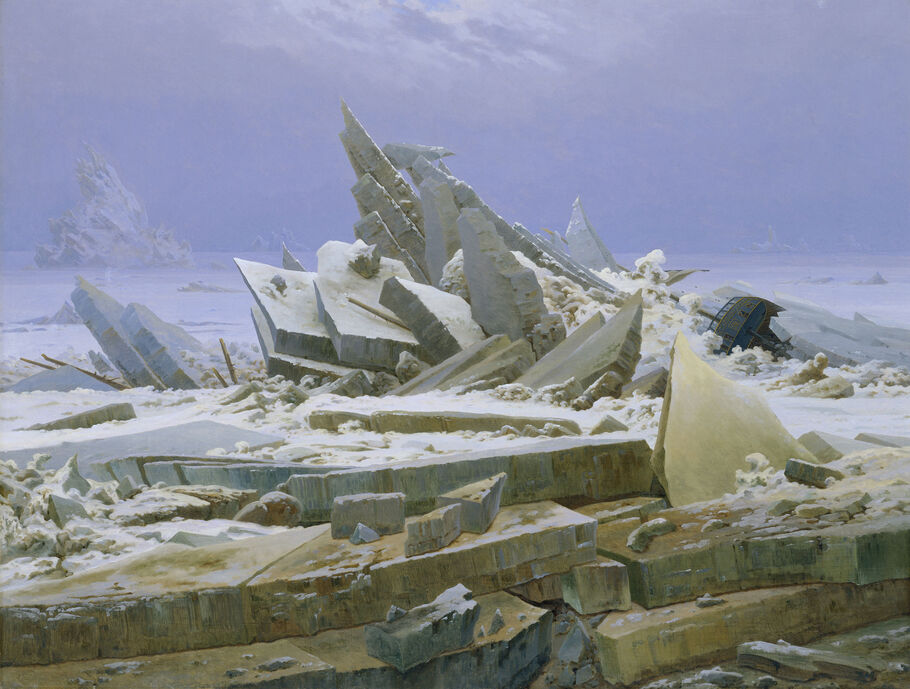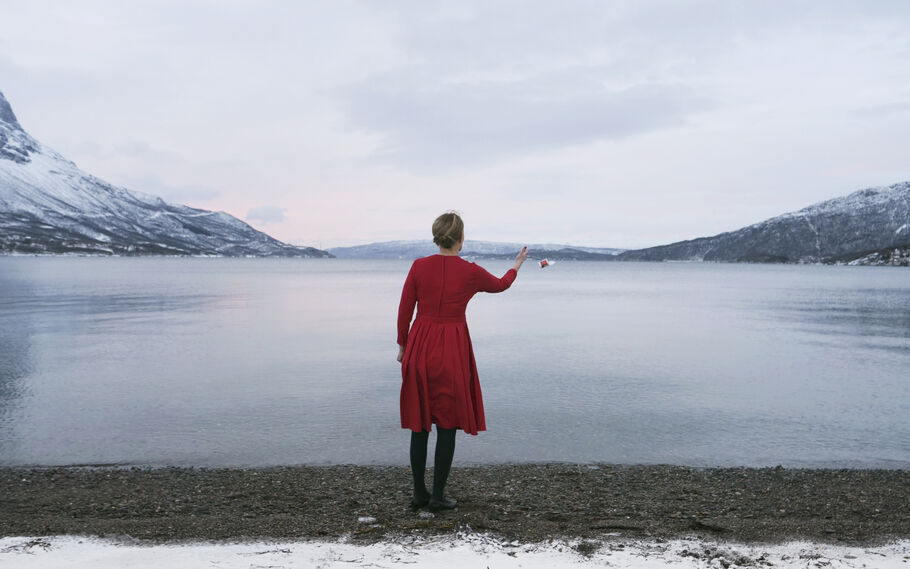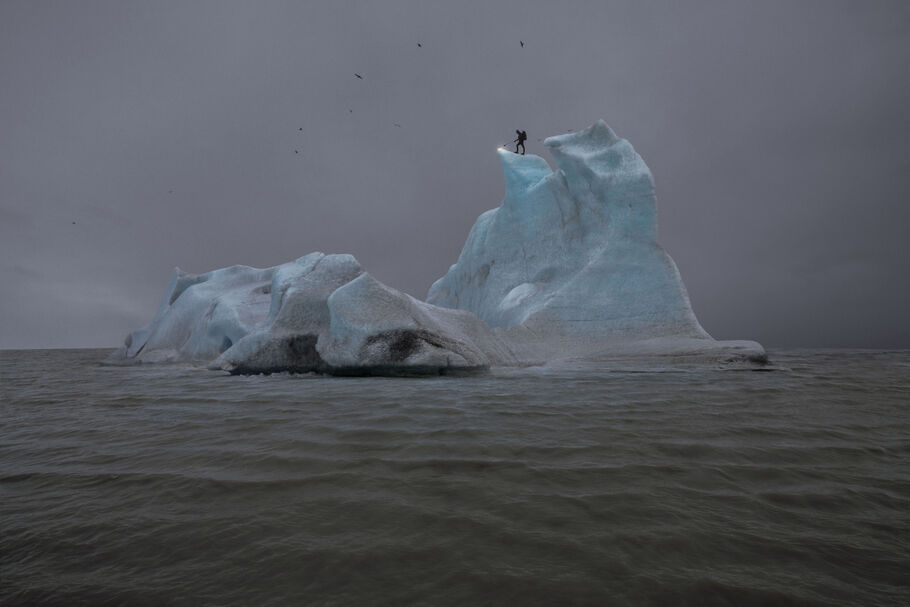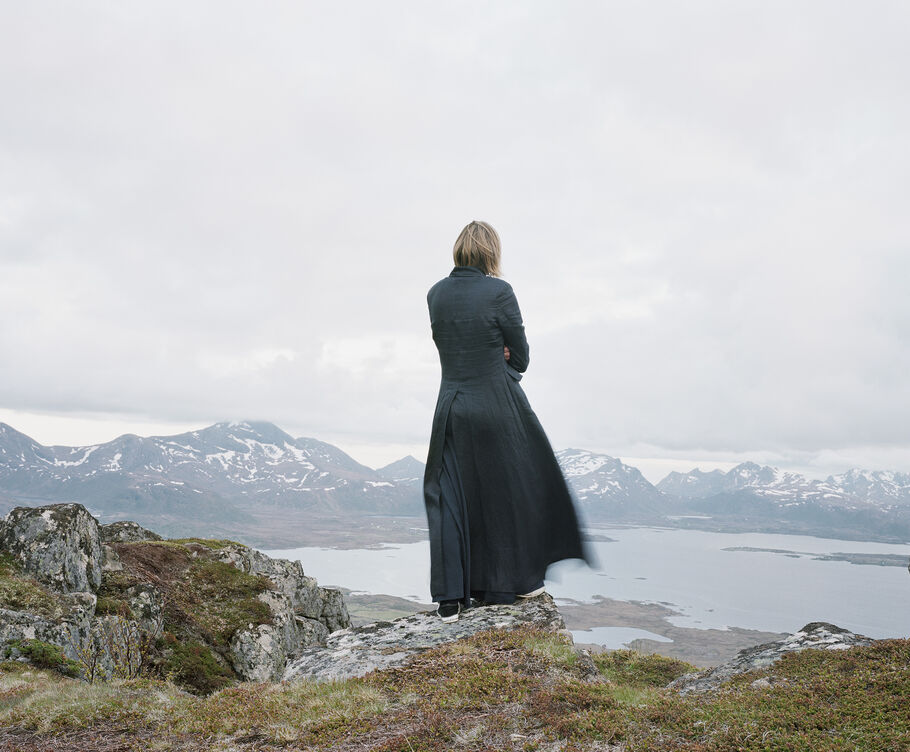Caspar David Friedrich, Meadows near Greifswald, 1821–22. © Hamburger Kunsthalle / bpk. Photo by Elke Walford. Courtesy of Hamburger Kunsthalle,
Friedrich was born in Greifswald, Swedish Pomerania, now a part of Germany, in 1774, and came of age in the Romantic era, which worshipped the beauty of nature and exalted human emotion over reason. His vast, mysterious, and deeply atmospheric landscapes and seascapes were a highly unique response to the era’s ideals.
Having created painstakingly accurate sketches of flowers, rocks, or trees, he would then insert them into landscapes conjured from his memories. “The landscapes are not topographically accurate, but the singular aspects are very precise. This is something unique,” said Johannes Grave, co-curator of the Kunsthalle’s exhibition.
Nonetheless, Friedrich’s exact intentions have divided critics. “There is no complete consensus on what Friedrich had in mind. Some people think it is about religion, others think it is about politics,” explained Grave. However, one thing that seems certain is his desire to evoke emotion in those who viewed his painting. In his Observations upon Viewing a Collection of Paintings, from around 1830, he wrote that it is “a great merit, perhaps the greatest thing an artist is capable of, when he touches the spirit and arouses thoughts, feelings and emotions in the beholder, even if they are not his own.”
Caspar David Friedrich, The Sea of Ice, 1823–24. © Hamburger Kunsthalle / bpk Photo by Elke Walford. Courtesy of Hamburger Kunsthalle
His repeated use of Rückenfiguren—figures with their backs turned to the viewer so that their expression is concealed—can be seen as a means to encourage this. “We are invited to reflect on what it means to see,” said Grave.
Friedrich’s works reached the peak of their popularity in the 1810s, but by the 1820s he was already falling out of favor. “He was criticized for always doing the same thing and for being dark and melancholy,” said Grave. The Sea of Ice (1823–24), with its monumental slabs of ice rising aggressively up from the frozen sea, appears to have particularly unsettled contemporary viewers.
A 1906 exhibition saw a resurgence of interest in his work, but an unfortunate association with the Nazis—Friedrich was apparently Hitler’s favorite painter—caused a dramatic backlash in the years after World War II. His reputation didn’t recover until the 1970s, when major exhibitions in Dresden and Hamburg rehabilitated him. “From the 1970s he became an important part of the cultural memory of Germany,” Grave said.
Swaantje Güntzel, Arctic Yoghurt, 2021. Photo by Jan Philip Scheibe. Courtesy of the artist / VG Bild-Kunst, Bonn 2024.
Today, contemporary artists are finding inspiration in Friedrich’s work on multiple levels. His explorations of the individual, and his relationship with nature, are a starting point for many artists who are grappling with our current troubled relationship with the natural world in the era of climate change.
Several artists reference Friedrich’s Rückenfiguren, placing their contemporary figures turned away from the viewer in icy landscapes. But rather than being awed by what they see before them, these figures casually participate in its destruction. For instance, in Swaantje Güntzel’s photo series “Arctic Yoghurt” (2021), a woman tosses a plastic cup into a shimmering fjord, highlighting how our thoughtless attitude to plastic waste disposal is polluting the previously untouched Arctic.
Julian Charrière, The Blue Fossil Entropic Stories III, 2013. © Julian Charrière / VG Bild-Kunst, Bonn 2023. Courtesy DITTRICH & SCHLECHT-RIEM, Berlin.
Julian Charrière’s “The Blue Fossil Entropic Stories” series (2013) is even more aggressive in its depiction of an environment destroyed by human hands. The artist, as a tiny figure, can be seen attempting to melt an iceberg with a gas torch, a pointed illustration of the disappearance of ice due to manmade global warming.
Elsewhere, Olafur Eliasson’s Colour experiment no. 86 (2019) distills Friedrich’s evocation of mood into abstract form by transforming the color spectrum of The Sea of Ice into an eerily foreboding wheel.
Though Friedrich was unique for his time, he is still representative of the white, male-dominated Western canon of art history, providing artists with an opportunity for critique. “By referring to him you can question this canon and comment on the exclusions that are a part of that,” says Grave.
Elina Brotherus, Der Wanderer 2, 2004. © Elina Brotherus / VG Bild-Kunst, Bonn 2023. Courtesy of Hamburger Kunsthalle.
Elina Brotherus, for example, places herself and others in photographic interpretations of The Wanderer in order to counter its male, heroic connotations and encourage a shared experience of nature with the viewer. In The Wanderer 2 (2004) from “The New Painting” series, the artist photographed herself dressed in a long blue coat and sneakers, her pose notably more relaxed and contemplative than that of the original.
Kehinde Wiley takes a similar approach in his “Prelude” series in order to emphasize how people of color have so frequently been marginalized or excluded from Western art. In The Prelude (Babacar Mané) (2021), a young Black man with cornrows stands in the same spot as The Wanderer, while in The Prelude (Ibrahima Ndiaye and El Hadji Malick Gueye) (2021), two figures are placed in the landscape of Friedrich’s Chalk Cliffs on Rügen (ca. 1818). But while the subjects of the original had their backs to the viewer, Wiley has one of his figures turn to look the viewer straight in the eye.
Kehinde Wiley, The Prelude (Ibrahima Ndiaye and El Hadji Malick Gueye), 2021. © Kehinde Wiley. Courtesy of the artist and Stephen Friedman Gallery, London.
David Claerbout, Wildfire (meditation on fire), 2019–20. © VG Bild-Kunst, Bonn 2023. Courtesy of the artist and Kunstmuseum Bonn.
These works cannot help but evoke “thoughts, feelings and emotions” in the viewer, as Friedrich believed any great work of art should. After 250 years, his approach is still as valid as ever and, given the subject matter of the artists inspired by him, perhaps even more essential.

